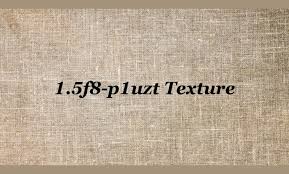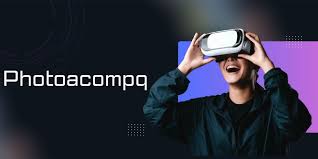Have you ever come across something that looked so fascinating you couldn’t quite explain what made it special? That’s exactly how most people feel when they first hear about or see the 1.5f8-p1uzt texture. It’s a term that may sound a bit technical, almost like a digital code or a complex design element, but beneath that name lies a world of creativity, precision, and modern innovation.
So, what exactly is the 1.5f8-p1uzt texture, and why is it getting attention in design circles, digital art, and even material science? Let’s dive deep into the story behind it, explore its uses, and uncover what makes it a standout texture in today’s visual landscape.
Understanding the Concept of 1.5f8-p1uzt Texture
Before we get into the creative side, let’s understand what this texture actually means. The term “1.5f8-p1uzt” may look random, but in digital texture design, codes like these often represent specific design templates or algorithmic patterns. These textures are generated using mathematical sequences or rendering tools that form patterns resembling natural or abstract surfaces.
In simpler words, 1.5f8-p1uzt texture can be seen as a blend of digital precision and artistic randomness. It’s not just another flat pattern—it’s a rich, layered texture with depth and rhythm. Many digital artists and 3D designers describe it as having a balanced feel, where both structure and spontaneity meet.
Why Textures Like 1.5f8-p1uzt Matter in Modern Design
Textures are not just visual fillers. They tell stories. Whether you’re creating a video game world, a website background, or a 3D model, textures bring realism and emotion to the scene. The 1.5f8-p1uzt texture, in particular, stands out for its ability to blend naturally into different environments.
Designers love it because it adapts easily. It can look futuristic in one context and organic in another. This flexibility is what makes it appealing across multiple design platforms—especially where seamless visual blending is crucial.
For instance, in 3D modeling software, artists often look for textures that don’t repeat awkwardly or show visible pattern lines. The 1.5f8-p1uzt texture handles that challenge beautifully by offering a smooth, continuous design flow.
The Digital Roots: How 1.5f8-p1uzt Texture Is Created
Now, you might be wondering, how is such a texture even made? The process is both technical and creative. It usually starts with algorithmic generation, where mathematical formulas define the structure of the texture. Then, designers tweak it manually to bring out unique features—shadows, highlights, gradients, and more.
Some tools even allow creators to simulate real-world material behaviors—like how light reflects on metal or how fabric wrinkles. This is where 1.5f8-p1uzt texture shines. It mimics real materials while maintaining its digital identity, making it perfect for high-resolution renders or immersive visual experiences.
Think of it like mixing science and art. The base pattern is generated through logic, but the finishing touch comes from creative instinct.The Visual Appeal of 1.5f8-p1uzt Texture
The first thing you’ll notice about the 1.5f8-p1uzt texture is its visual harmony. It doesn’t overwhelm the eyes, yet it captures attention instantly. Depending on how it’s applied, it can look sleek and modern or warm and natural.
Designers often describe its appeal as “subtly complex.” It’s not loud or distracting, but it has enough movement and variation to keep the viewer engaged. Whether used as a background in digital media or as a surface in 3D modeling, it delivers a professional finish without stealing focus from the main subject.
Applications Across Creative Fields
The versatility of 1.5f8-p1uzt texture is what makes it so impressive. It has made its way into various creative industries, from graphic design to architectural visualization. Let’s explore some of its popular uses.
1. Game Design
In the gaming world, textures define the atmosphere. The 1.5f8-p1uzt texture adds depth and realism to virtual environments. Developers use it for surfaces like stone, metal, or even alien landscapes. Because it has a balanced tone, it blends well with lighting effects and shadow dynamics in game engines.
2. Digital Art and Animation
For artists who want a futuristic or abstract edge, this texture provides a great foundation. It supports creative overlays and color grading, making digital paintings or animated scenes pop with vibrancy.
3. Web and UI Design
Modern websites and apps often rely on subtle backgrounds that add texture without distraction. The 1.5f8-p1uzt texture serves perfectly for that. It can be adjusted to different tones, giving digital interfaces a sophisticated yet clean aesthetic.
4. Architecture and Product Visualization
Architects and industrial designers use textures to visualize materials before they’re made. When applied to 3D models of interiors or products, the 1.5f8-p1uzt texture gives a realistic sense of how surfaces might appear under different lighting conditions.

Balancing Simplicity and Detail
One of the most remarkable qualities of this texture is its balance. It’s detailed enough to be interesting, yet simple enough to remain elegant. Achieving that harmony is not easy in digital design. Too much detail can clutter the composition, while too little can make it look dull.
The 1.5f8-p1uzt texture strikes that perfect middle ground. Its micro-pattern variations create visual intrigue, while its smooth transitions prevent harsh breaks or pixelation. That’s why it feels so natural to the eye, even in high-resolution displays.
How the Texture Enhances User Experience
When used in interactive designs like apps or websites, textures subtly influence how users feel. A well-chosen texture can create warmth, depth, and engagement. The 1.5f8-p1uzt texture has this effect because it evokes a sense of harmony and familiarity.
Users may not consciously notice the texture, but they feel its presence through the smooth visual flow. That’s why many UX designers prefer it—it enhances aesthetics without stealing attention from functionality.
Customization and Adaptability
Another reason why 1.5f8-p1uzt texture is so popular is its customization potential. Designers can adjust its hue, contrast, and scale to fit any creative direction. Whether it’s for a dark-themed interface or a bright minimalist layout, the texture adapts effortlessly.
It’s like having a universal design base that can transform according to your imagination. Some even layer it with other effects, such as motion blur or gradient overlays, to create new visual identities from the same texture foundation.
Realism in Rendering and Simulation
In 3D and visual effects production, achieving realism is often the biggest challenge. The texture plays a crucial role in bridging the gap between digital creation and real-world appearance.
The 1.5f8-p1uzt texture excels here because of its organic visual rhythm. It reflects light naturally and doesn’t produce artificial repetition patterns. This makes it ideal for rendering surfaces like walls, metals, fabrics, or even futuristic panels in sci-fi environments.
When combined with modern rendering engines like Unreal Engine or Blender’s Cycles, it produces visually stunning outcomes that look almost photographic.
How the Texture Fits into the Trend of Digital Minimalism
Modern design is moving toward minimalism with texture, a trend that values clean visuals enhanced by subtle depth. The 1.5f8-p1uzt texture fits perfectly into this philosophy.
It doesn’t scream for attention, yet it makes an impact. Designers can use it as a soft backdrop or as a foundation for branding materials, achieving a premium look without overcomplicating things.
The Psychological Side of Texture Design
Textures don’t just appeal to the eyes—they affect emotions too. Studies in visual psychology show that certain patterns can evoke calmness, curiosity, or energy.
The 1.5f8-p1uzt texture, with its balanced composition, tends to create a feeling of order and creativity. It’s structured but not rigid, rhythmic but not chaotic. This emotional balance makes it suitable for designs meant to inspire confidence or focus, such as tech websites, modern interiors, and digital art portfolios.
Sustainability in Digital Texture Creation
As the world becomes more environmentally conscious, digital creators are also adopting sustainable approaches. Instead of photographing real materials repeatedly or creating textures from scratch every time, designers now rely on reusable, high-quality texture sets like 1.5f8-p1uzt.
This reduces the digital carbon footprint, saves time, and promotes a greener workflow. It’s not just about beauty—it’s also about responsibility in the digital ecosystem.
Tips for Using 1.5f8-p1uzt Texture in Design Projects
If you’re planning to use this texture in your own work, here are a few tips:
-
Use It as a Foundation: Don’t let it overpower your main elements. Keep it subtle in the background to enhance visual harmony.
-
Experiment with Lighting: Try different lighting setups if you’re using it in 3D rendering. The texture reacts beautifully to directional and ambient light.
-
Combine with Gradients: Blending it with soft gradients can give a more modern and polished look.
-
Avoid Over-Repetition: Use texture tiling carefully to maintain natural flow and prevent visible patterns.
-
Adjust Opacity: Sometimes lowering opacity helps create a smoother, more refined aesthetic.
Why 1.5f8-p1uzt Texture Represents the Future of Visual Design
In many ways, the 1.5f8-p1uzt texture symbolizes the evolution of digital creativity. It embodies the idea that technology and art don’t have to compete—they can complement each other.
As AI-assisted tools and generative design methods evolve, we’re entering an era where textures like this one will become even more dynamic, adaptive, and intelligent. Soon, they might respond in real time to environmental factors like lighting, motion, or user interaction.
That’s an exciting future where design feels alive, and textures like 1.5f8-p1uzt will lead the way.
Conclusion: A Texture That Blends Art, Tech, and Imagination
At first glance, 1.5f8-p1uzt texture might look like a random digital term. But when you explore it deeper, it represents a fascinating blend of science, creativity, and design intuition. Its adaptability, balance, and realism make it more than just a visual tool—it’s a bridge between imagination and execution.
Whether you’re a 3D artist, a web designer, or someone who simply appreciates the beauty of modern digital art, the 1.5f8-p1uzt texture offers endless inspiration. It shows how even the smallest digital details can transform the way we see and feel design.
So next time you notice a beautifully textured surface in a game, app, or animation, ask yourself—could it be the magic of 1.5f8-p1uzt behind it?


